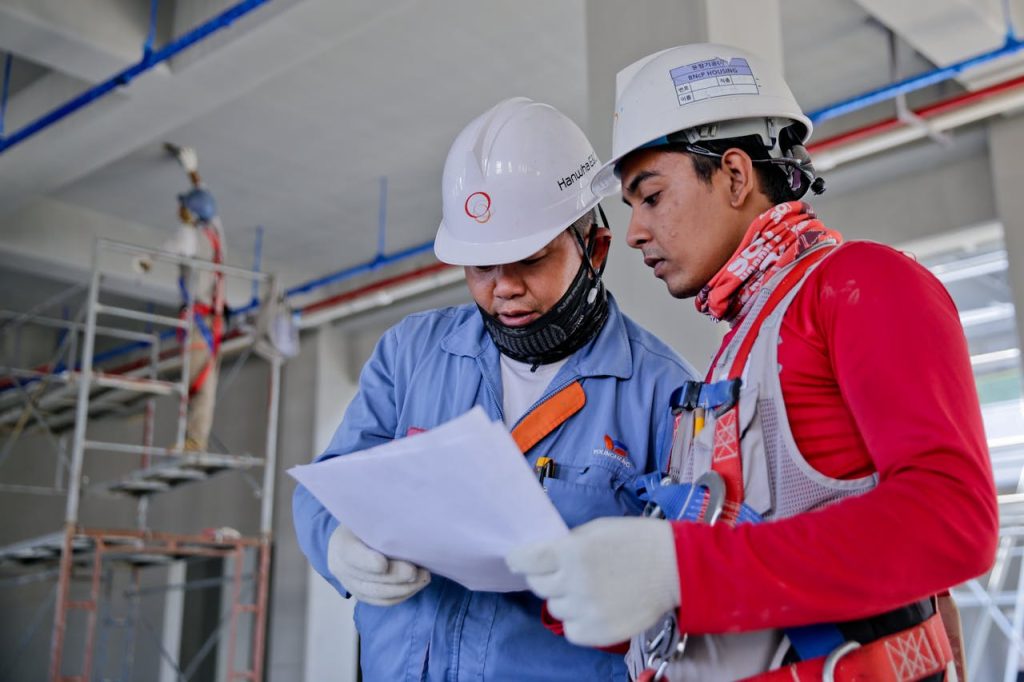Did you know that losing just one exceptional team member can cost your organisation 3.5 times their annual salary to replace? This staggering figure highlights why spotting future leaders has become a critical business priority. The top performers in any company deliver outsized results that drive success.
What makes this talent identification so urgent today? Despite overall low attrition rates, 75% of industries report increased turnover among their most promising staff. This creates a constant battle for retention and succession planning. Organisations that master finding and developing these future leaders gain a significant competitive edge.
We’ll explore the sophisticated tools and techniques HR professionals use to systematically uncover this precious talent. From assessment profiles to strategic frameworks, these methods help build robust leadership pipelines for long-term business success.
Key Takeaways
- Exceptional performers contribute disproportionately to organisational output and success
- Losing one of these valuable individuals costs significantly more than their salary
- Turnover among promising talent remains high despite overall stable attrition rates
- Systematic identification tools help build stronger leadership pipelines
- Investing in future leaders delivers double benefits through performance and retention

The Importance of Recognising High-Potential Employees
Organisations that master talent recognition gain a decisive competitive advantage in today’s market. Properly identifying and nurturing these special individuals creates a powerful foundation for sustained business success.
Impact on Organisational Performance
These exceptional team members deliver remarkable results across all levels. Research shows they outperform peers by approximately 50% in operational roles and achieve 85-100% better results in leadership positions.
Their superior performance directly boosts productivity, morale, and overall company outcomes.
Enhancing Employee Retention and Succession Planning
When organisations invest in proper recognition, they experience 31% lower turnover rates. This finding from Quantum Workplace highlights how appreciation builds loyalty and engagement.
Early identification prevents talented individuals from feeling underappreciated. It also strengthens your succession planning by ensuring future leaders are ready for greater responsibilities.
Failing to recognise this talent has significant financial consequences. Losing one valuable team member can cost 3.5 times their annual salary to replace.
Defining High-Potential Employees and Leadership Potential
While many staff members perform well, a distinct group possesses a unique combination of traits that signals future leadership success. We need a clear definition to spot these special individuals effectively.
These high-potential employees typically represent the top of a company’s workforce. They don’t just meet expectations; they consistently exceed them, producing fast and high-quality work.
Key Characteristics and Competencies
A competency framework is a great tool for definition. These individuals best fulfil both core organisational values and specific job-family skills.
Their true value lies in a blend of current ability and future capacity. Key traits include exceptional learning agility and adaptability to new challenges.
We see strong leadership potential in their natural decision-making and strategic thinking. They are resourceful when facing complex problems.
| Characteristic | High Performer | High-Potential Employee |
|---|---|---|
| Focus | Excels in current role | Excels now and shows capacity for future roles |
| Learning Agility | Learns assigned skills | Seeks out and masters new skills quickly |
| Impact | Strong individual contributor | Potential to influence organisational growth |
This designation marks them as long-term assets. Their ambition and cultural alignment make them ready for greater responsibilities.

Differentiating High-Potential Employees from High Performers
The distinction between today’s top achievers and tomorrow’s leaders is often misunderstood in talent management. Many organisations make the costly error of assuming that exceptional current results automatically indicate readiness for future leadership roles.
We need to look beyond present achievements to spot true future capability. This requires understanding what separates consistent excellence from genuine growth potential.
Assessing Potential Versus Current Performance
High performers deliver outstanding results within their current scope of responsibilities. They consistently meet targets and produce quality work. However, they may lack the adaptability needed for advancement.
In contrast, individuals with high potential demonstrate capacity for future growth. They show desire for broader responsibilities and handle ambiguity well. Their leadership abilities make them valuable for long-term goals.
Performance metrics measure effectiveness in present roles. Potential assessment evaluates readiness for complex future positions. Both are important but serve different purposes in career development.
| Assessment Area | High Performer Focus | High-Potential Focus |
|---|---|---|
| Primary Strength | Current role excellence | Future role capacity |
| Key Indicator | Consistent output quality | Learning agility and adaptability |
| Career Path | Specialist advancement | Leadership progression |
| Organisational Value | Immediate contribution | Long-term strategic impact |
Recognising this difference helps build stronger leadership pipelines. It ensures we develop the right people for the right future roles.
Identifying high-potential employees Using Tools
HR professionals now have access to powerful diagnostic tools that reveal hidden leadership potential across organisations. These comprehensive systems help us move beyond gut feelings to data-driven decisions about talent development.
Profiling assessments offer reliable techniques for spotting individuals with future leadership capacity. They help determine whether someone possesses the drive, creativity, and resilience needed for advanced roles.
Profiling Assessments and Performance Metrics
These evaluations uncover behaviours, values, and beliefs that make people worth the investment. Validated leadership assessments provide objective measures of cognitive abilities and personality traits.
Tracking performance using metrics gives managers clear insights into work quality and behaviour patterns. This systematic approach helps us follow activities closely over time.
Objective data removes personal bias from the identification process. It creates a fair foundation for recognising true capability.
Manager and Peer Feedback Integration
Managers work directly with their teams and have firsthand knowledge about skills and talents. Their observations provide crucial context about day-to-day performance patterns.
Peer and customer feedback offers additional perspectives that management might miss. These groups see different aspects of how individuals handle challenges and relationships.
360-degree feedback systems gather input from multiple sources for a holistic view. This comprehensive approach ensures we capture the full picture of someone’s impact and interpersonal skills.
Combining these tools creates a robust process that minimises bias. It helps ensure we accurately spot talent across the entire organisation.

Tools and Techniques for Effective Talent Management
The journey from recognising talent potential to developing future leaders begins with implementing the right assessment frameworks. These systematic approaches transform subjective observations into objective data that guides strategic decisions.
The 9-Box Grid Matrix and Its Applications
The 9-Box Grid serves as a foundational visual tool that categorises team members based on two key dimensions: current performance and future potential. This matrix provides a clear snapshot of your organisation’s talent landscape.
Individuals appearing in the top-right quadrant represent your most promising talent. The grid facilitates strategic conversations about succession planning and development priorities among managers and HR leaders.
Utilising Psychometric and Personality Assessments
Psychometric tools like Hogan Assessments and Myers-Briggs Type Indicator reveal underlying personality traits and behavioural styles. These instruments measure motivators that correlate with leadership success.
When benchmarked against your organisation’s proven top performers, these assessments create objective standards for potential identification. They provide valuable data on inherent capacity for growth in new roles.
Combined with robust performance management systems, these tools form a comprehensive approach to talent development. They help ensure fair and consistent evaluation across all departments.
Developing a Framework for HiPo Assessment
Building a structured assessment framework transforms subjective talent spotting into an objective, strategic process. We create consistency across departments when everyone uses the same evaluation standards.
This systematic approach ensures fairness in identifying future leaders. It moves beyond gut feelings to data-driven decisions.
Creating Clear Criteria and Role Profiles
Establishing precise criteria defines what ‘high potential’ means specifically for your organisation. We outline the particular skills, behaviours, and leadership indicators that matter most.
Aligning these definitions with business strategy ensures identified talent supports long-term goals. This strategic match prepares people for tomorrow’s key roles rather than just today’s requirements.
| Criteria Element | Current Role Focus | Future Potential Focus |
|---|---|---|
| Technical Skills | Current job proficiency | Capacity to learn new technologies |
| Leadership Behaviours | Team collaboration | Strategic influence and vision |
| Adaptability | Handling routine changes | Navigating complex ambiguity |
| Business Alignment | Meeting current targets | Contributing to future growth |
Training managers to distinguish potential from performance is critical. They learn to recognise staff who excel currently while demonstrating significant growth capacity.
Using an integrated competency framework builds detailed role profiles. These profiles enable objective comparisons against specific requirements for advancement.
Clear, consistently applied criteria help address talent shortage challenges. Everyone understands what leadership potential looks like across the organisation.

Strategies to Develop and Retain High-Potential Employees
Developing our future leaders requires more than just recognition, it demands strategic investment in comprehensive growth programmes. Once we identify promising talent, we must create pathways that transform potential into performance.
Implementing Coaching, Mentorship and Training Programmes
Structured coaching delivers remarkable results for emerging talent. Research shows 80% of workers report improved confidence and productivity after regular mentoring sessions.
Career development opportunities significantly boost motivation and retention. According to University of Berkeley studies, these programmes create mutual benefits for individuals and organisations.
Leadership training builds essential skills for advanced roles. These programmes focus on developing new capabilities rather than reinforcing existing authority.
Practical approaches like job shadowing allow team members to observe senior colleagues. This provides valuable experience before assuming greater responsibilities.
Developmental projects and special assignments expand skills while encouraging cross-organisational engagement. Expanding job descriptions benefits growth and collaboration.
Retention strategies include clear career paths with visible advancement opportunities. We also recommend competitive compensation, public recognition, and work-life balance support to prevent burnout.
Integrating Succession Planning Within HiPo Programmes
Imagine having a ready-made internal candidate when a senior leader suddenly departs. This is the core benefit of weaving succession planning directly into your high-potential employee initiatives. These special individuals possess natural leadership skills and a knack for solving complex problems.
A well-structured programme builds a robust pipeline of future leaders. It dramatically reduces the risk and disruption of unexpected vacancies. Many companies struggle with talent retention and leadership succession planning, but aligning your HiPo efforts with business goals creates a clear path forward.
We prepare our people for specific future roles through targeted development. This investment in leadership readiness ensures a seamless transition when key positions open. Filling these roles with internal talent offers significant advantages:
- Faster onboarding: Internal candidates already know the culture and systems.
- Stronger cultural fit: They are already aligned with company values.
- Boosted morale: It demonstrates a real commitment to employee growth.
Effective integration requires early identification and ongoing assessment. This strategic approach guarantees we have the right people ready for new opportunities, securing long-term organisational stability.

Building a Competitive Advantage Through Leadership Development
When we invest strategically in our people’s growth, we create an organisational advantage that competitors cannot easily replicate. This approach transforms our talent into our strongest asset.
Our future leaders act as force multipliers, boosting overall team productivity. They elevate everyone around them.
Case Examples and Success Stories
Research confirms that these special individuals are 91% more valuable than their peers. The top 20% of our team often generates 80% of our output.
In operational roles, they outperform by about 50%. In leadership positions, that difference grows to 85-100%.
Developing these team members is about more than filling vacancies. It creates an agile, skilled workforce ready for business challenges.
Companies that recognise this value secure long-term success. They build resilience against market changes through strategic development.
Conclusion
The strategic development of tomorrow’s leadership pipeline represents one of the most valuable investments any company can make. We’ve seen how systematic approaches to recognising future leaders create substantial organisational advantages.
While dedicating resources to this process requires effort, the returns are undeniable. Enhanced productivity, stronger retention, and robust succession planning justify this commitment completely. Our top talent remains in constant demand, making proactive identification essential.
Effective management requires an integrated approach combining assessment, planning, and tracking. The frameworks and tools we’ve explored provide a comprehensive pathway forward.
We encourage organisations to implement these strategies today. Investing in professional growth creates mutual benefits, building the agile leadership pipeline needed for future challenges.
Begin refining your development programmes using this guidance. Systematically nurturing tomorrow’s leaders drives lasting organisational success.



